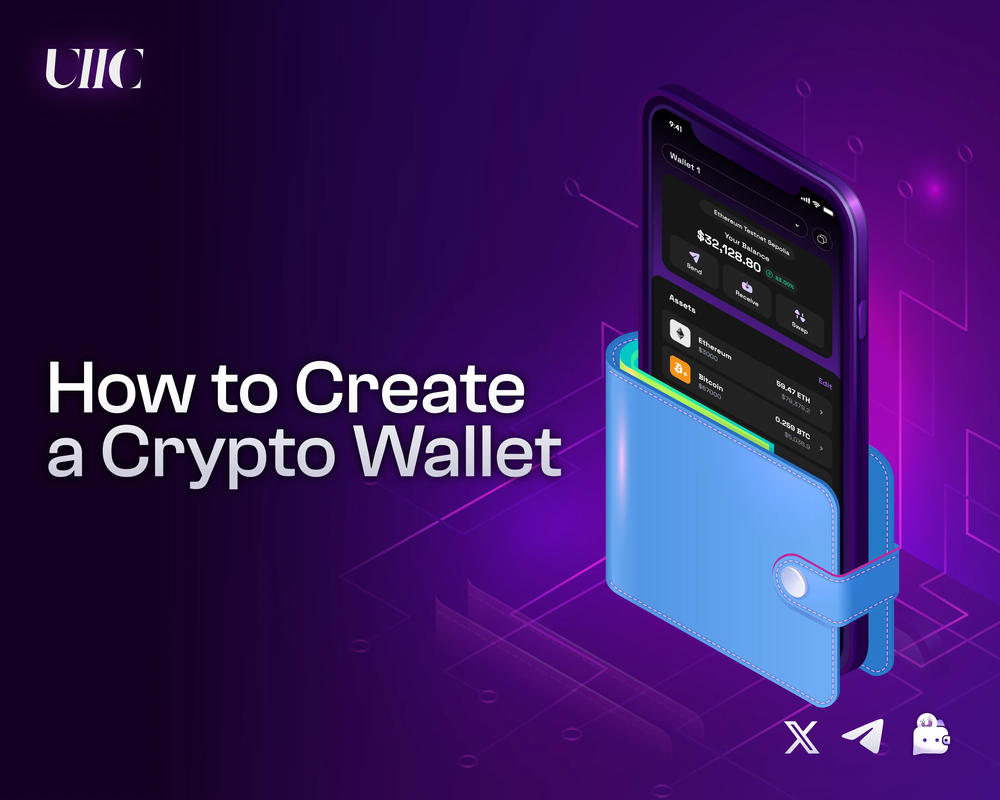# How to Create a Crypto Wallet: Your Guide to Securing Digital Wealth
As cryptocurrency becomes a global financial force, owning and securing your crypto is a must. This guide walks you through how to create a crypto wallet—from choosing the right type to setting up security like a pro.
---
## 1. Choose Your Wallet Type
### 🔥 Hot Wallets (Internet-connected)
Ideal for everyday use and fast transactions.
- **Mobile Wallets** (e.g. Trust Wallet, Mycelium)
- **Desktop Wallets** (e.g. Exodus, Electrum)
- **Web Wallets** (browser-based, easy but less secure)
### 🧊 Cold Wallets (Offline storage)
Best for long-term HODLers who prioritize security.
- **Hardware Wallets** (e.g. Ledger, Trezor)
- **Paper Wallets** (physically printed public/private keys)
---
## 2. Select a Wallet Provider
Choose a reputable provider depending on wallet type:
- **Mobile/Desktop**: Trust Wallet, Mycelium, Exodus, Electrum
- **Hardware**: Ledger, Trezor
- Always verify you’re downloading from the official website or store.
---
## 3. Download, Buy, or Install
- **Hot Wallets**:
- Download from the App Store, Google Play, or official website
- Install on your device
- **Hardware Wallets**:
- Purchase from authorized retailers
- Follow setup instructions and install official software
---
## 4. Create a New Wallet
- Open the wallet app or plug in your hardware wallet
- Click **“Create New Wallet”**
- The app will generate **private keys** or a **seed phrase**
---
## 5. Set Up Security Features
- **Create a strong password** (avoid using your birth date or “123456”)
- **Backup your seed phrase** (write it on paper, not on your phone)
- **Do not share your seed phrase with anyone**
---
## 6. Verify the Seed Phrase
The wallet may ask you to re-enter the phrase to confirm you've backed it up correctly. This step is **crucial**.
---
## 7. Add Extra Security
- **Enable 2FA**: Adds a second layer via SMS or Authenticator App
- **Biometric Login**: Use fingerprint/face recognition if available
---
## 8. Start Using Your Wallet
- **Receive crypto**: Share your wallet’s public address
- **Send crypto**: Use “Send,” enter the recipient’s address and amount, and confirm
Double-check the destination address. Crypto transactions are **irreversible**.
---
## 9. Secure Your Wallet Ongoing
- **Update regularly**: Install wallet updates for new features and security patches
- **Avoid public Wi-Fi**: Use secure internet connections
- **Monitor your activity**: Stay aware of any unauthorized logins
---
## ✅ Conclusion
Creating a crypto wallet is your first step toward true digital ownership.
Choose hot wallets for convenience, cold wallets for ultimate safety—or use both strategically.
> 🔒 Your crypto is only as safe as your wallet setup. Protect it like you would a real vault.
Need a secure wallet solution?
Check out **UI Chat** — a powerful, privacy-first crypto wallet built for the Web3 generation. Visit our website to learn more.

How to Create a Crypto Wallet
Educational
Jul 29, 2024

Shape the Future
with UIIC
Join our community to shape a smarter,
decentralized digital world.

